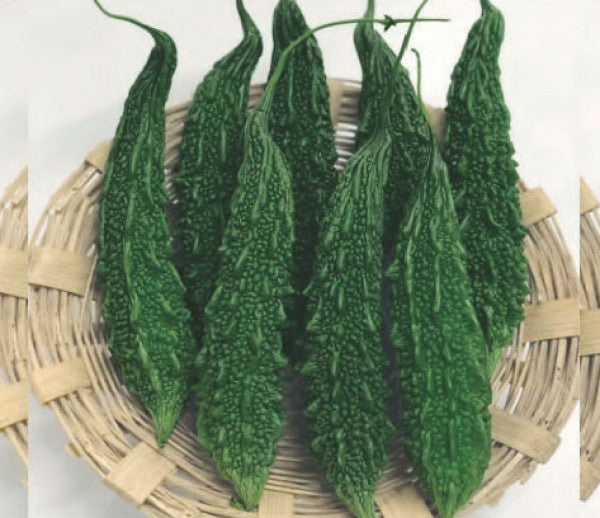
Dharaseeds
Bitter gourd-Bahadur
1499
Estimated delivery between April 16 and April 19.
High-Yielding and Resilient Variety for Healthy, Bitter Fruits
The Bahadur Bitter Gourd is a hardy variety known for its ability to produce high-quality, bitter fruits even in challenging growing conditions. This variety thrives in tropical and subtropical climates and is valued for its nutritional benefits and long harvest season. It's an ideal choice for home gardeners and commercial growers seeking a reliable bitter gourd variety.
Key Benefits
- High Yield: Bahadur bitter gourd produces a high number of fruits per plant, making it perfect for home gardens or small-scale farming.
- Resilient and Hardy: Known for its disease resistance and ability to thrive in a variety of growing conditions.
- Bitter and Nutrient-Rich: The fruit has a distinctive bitter taste, packed with essential vitamins and minerals such as Vitamin C, Vitamin A, and iron.
- Culinary Versatility: Ideal for stir-fries, curries, and traditional dishes. The bitter taste can be balanced with other ingredients or used as a detoxifying vegetable.
- Long Harvest Period: Suitable for extended harvesting, providing fresh, healthy produce for a longer period.
Planting Instructions
Planting Season
- Plant Bitter Gourd Bahadur during the warm season when the soil temperature is above 70°F (21°C), ideally in spring or early summer.
- In tropical climates, bitter gourd can be planted year-round if temperatures remain consistently warm.
Planting Details
- Seed Depth: Sow seeds 1 inch deep in well-prepared, fertile soil.
- Spacing: Space plants about 18-24 inches apart in rows. If growing on a trellis, allow for 3-4 feet of space between rows.
- Sunlight: Bitter gourd requires full sun, so plant it in an area with at least 6-8 hours of direct sunlight each day.
Care Instructions
Watering
- Bitter gourd prefers consistent moisture, but avoid waterlogging. Water deeply to promote healthy root growth.
- Ensure the soil is well-draining and water regularly during dry periods, particularly when the plants are fruiting.
Fertilizing
- Before planting, enrich the soil with organic compost or well-rotted manure.
- Use a balanced fertilizer with a slight emphasis on phosphorus to support flower and fruit development. Once the plant begins fruiting, use a potassium-rich fertilizer to encourage strong fruit production.
Vine Support
- Bitter gourd is a climbing vine. Provide a trellis or support structure for the vines to climb, which will help keep the fruits off the ground and make harvesting easier.
Pest and Disease Management
- Keep an eye out for pests like aphids, caterpillars, and whiteflies. Use organic insecticidal soap or neem oil to control pests.
- To prevent fungal diseases, ensure good air circulation by spacing the plants properly and avoiding overhead watering.
Harvesting
- Bitter gourd typically matures around 60-80 days after sowing, depending on the growing conditions.
- Harvest when the fruit is still green and before it becomes overly mature and starts turning yellow or orange. The fruit should be firm and the skin should retain a fresh, vibrant green color.
- Use a sharp knife to cut the fruit from the vine, ensuring you don't damage the plant or other developing fruits.
Additional Notes
- Pruning: Prune the vine regularly to remove excess growth and improve air circulation, allowing more energy to go into fruit production.
- Nutritional Value: The bitter taste is a signature feature of this variety, but the bitterness can be reduced by soaking the sliced fruit in saltwater for a few hours before cooking.
- Soil Conditions: Best grown in loamy, well-draining soil with a neutral to slightly acidic pH (6-7).
The Bahadur Bitter Gourd is a perfect choice for those looking for a resilient, high-yielding, and nutritious vegetable. Whether you're growing it for health benefits or culinary purposes, this variety is sure to meet your needs!








